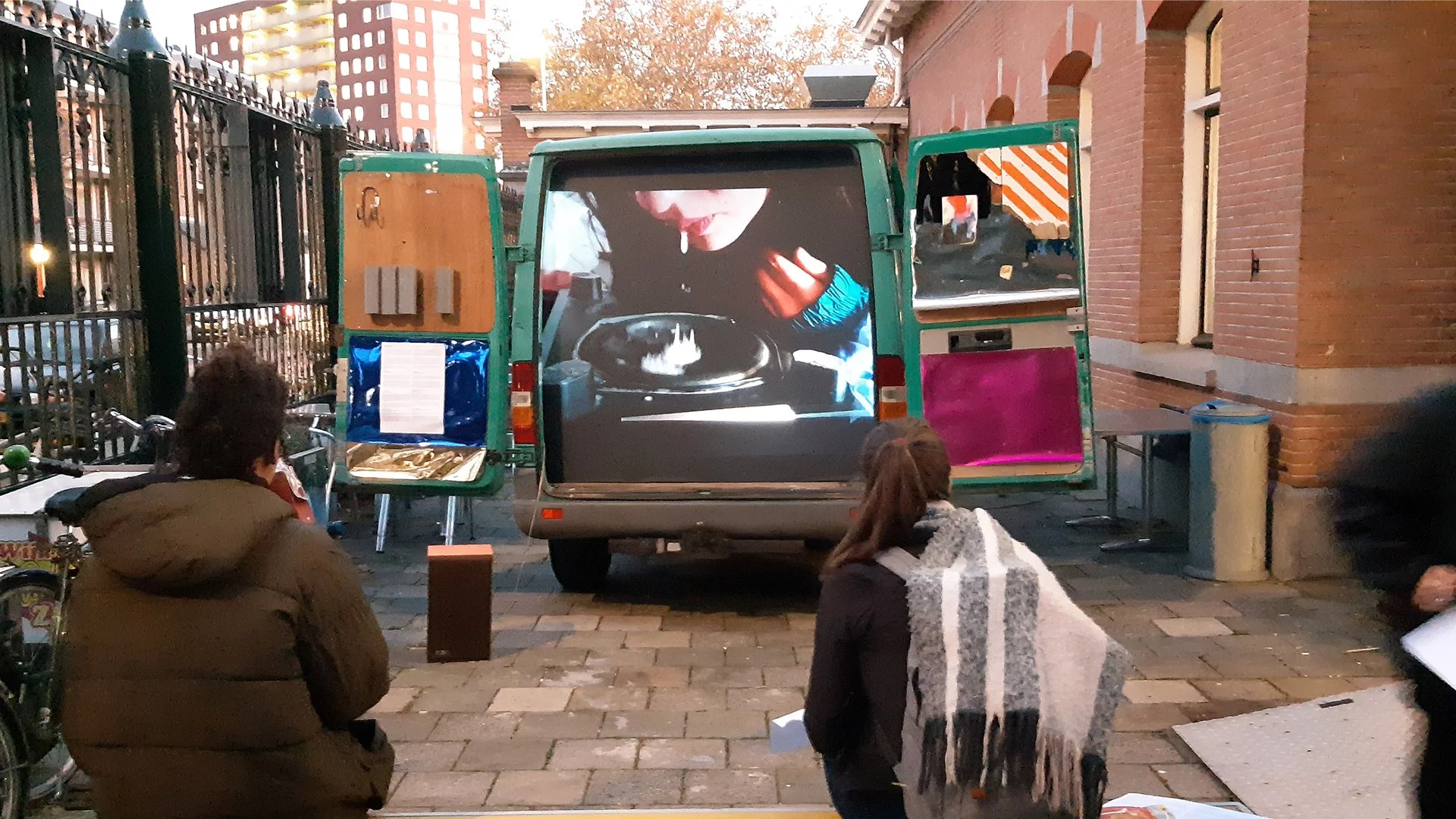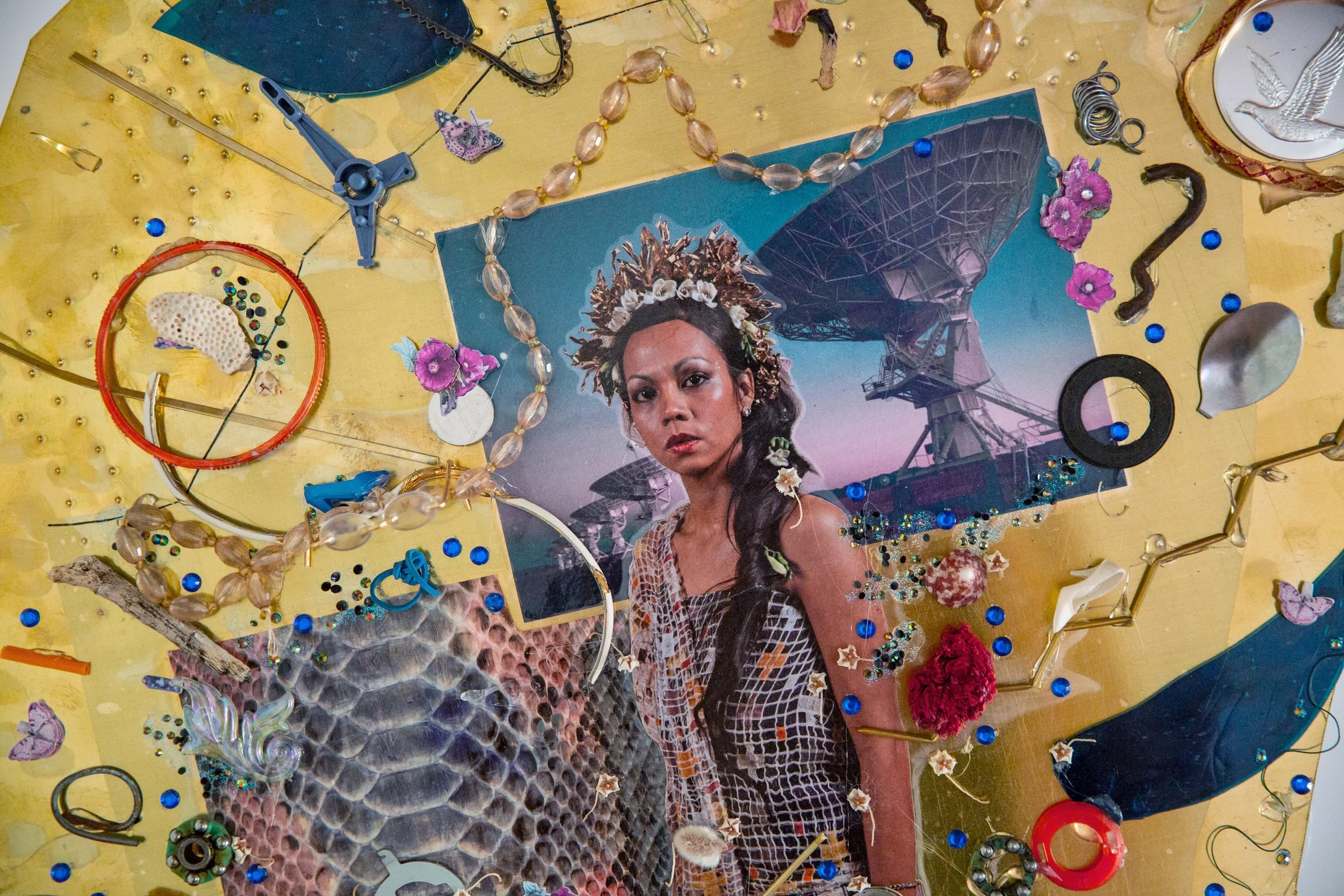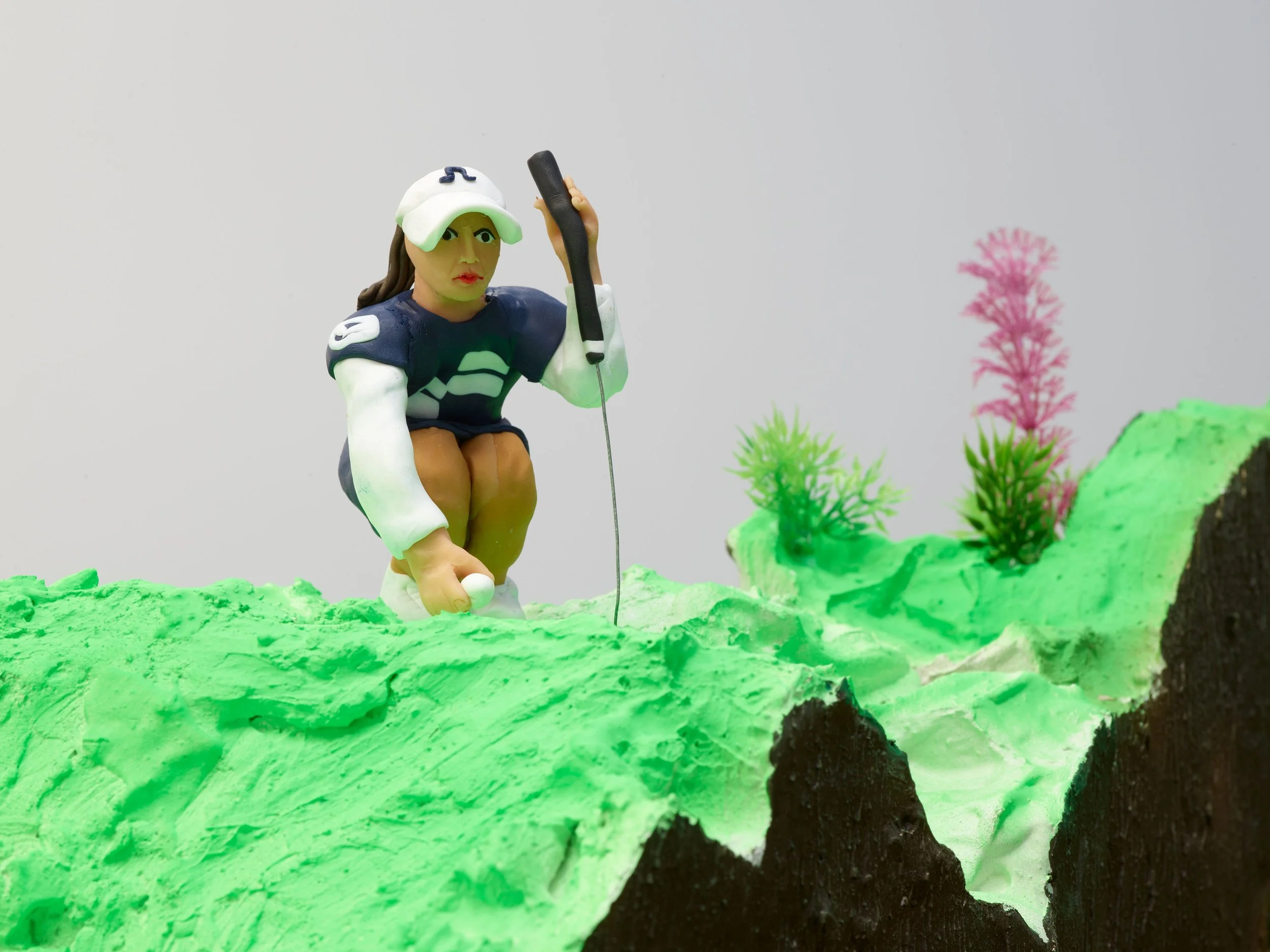Midpoint: Jay Tan
On aesthetic rubble and art as a cosmic force
Midpoint is a monthly series that invites established Southeast Asian contemporary artists to take stock of their career thus far, reflect upon generational shifts and consider the advantages and challenges of working in the present day. It is part of A&M Interviews and builds upon the popular Fresh Face series.
Jay Tan in the studio, 2024. Photo by Clem Edwards.
Jay Tan is an artist and educator based in Rotterdam, the Netherlands. Made of everyday materials associated with domestic spaces, their sculptures and installations often feature the use of figurines, low-res videos and moving parts. They were a resident at the Rijksadademie from 2014 to 2015, and received nominations for the Volkskrant Prize in 2017 and the Dolf Henkes Prize in 2021. They teach at the Royal Academy of Art at The Hague and Gerrit Rietveld Academie in Amsterdam. Jay has exhibited at venues such as Ujazdowski Castle Centre for Contemporary Art (Warsaw), Futura (Prague), Kunstverein (Amsterdam), Kunstinstituut Melly (Rotterdam) and Camden Arts Centre (London), among others.
Jay Tan, Spit Speakers, 2015, presented in Cinema Enima (2018-2019). Image courtesy of the artist.
Looking back, could you share a decision or event that marked a significant turn or moment in your path as an artist?
There have been many! On my first day at art school, it dawned on me how many amazing artists there are in the world then and throughout time. I realised that if there are so many incredible people in this one place, then how many more must there be outside of institutions and across history? It made me feel like the field of art was so big and wondrous, and I felt excited to be a small part of it. Before art school, I thought I was a great artist, haha! After that first day I was happy just meeting these imaginative, critical and playful people and spending time with them.
After completing my Masters in Fine Art at Piet Zwart Institute in 2010, I had another realisation. I would not worry about trying to appear clever through my work. I started figuring out ways to give myself permission to make my dreams come true instead, to make works that are led by my desires rather than attempting to illustrate complex theories.
When have been milestone achievements for you as an artist, and why have they been particularly memorable?
I do not have notions of milestones. There are exhibitions, awards and residency programmes I have participated in that can be seen as prestigious in particular local contexts, but I do not think these were necessarily achievements. Being selected for the Rijksakademie residency is like winning a lottery. It is a lot about luck. To me, meeting and keeping friends and loved ones along the way are the important milestones. Art world achievements can be funny and fickle.
To me, meeting and keeping friends and loved ones along the way are the important milestones. Art world achievements can be funny and fickle.
Fridge magnets made with screenshots of Jay Tan’s chat with their mum.
Could you walk us through a typical work day, or a typical week? Are there routine(s) you follow to nourish yourself or your artistic practice?
I am either on and off. Currently, I am teaching in art schools more so I do not have a regular routine in the studio. I tend to work in bursts. When I have a deadline or something that I am excited to make, I can work in the studio round the clock for weeks or months at a time. When I am making, I have the television or radio on in the background. To nourish myself, I think about or talk to my mum. She often surprises me with her perspectives. She is also an interesting artist, even though she has neither formal training nor does she think of herself that way. I also need to be in the United Kingdom or Malaysia regularly, and top up different parts of my battery.
Could you describe your studio or workspace? How has it evolved over the years? What do you enjoy about it, and what do you wish to improve?
It is big and messy and colourful, with floor to ceiling shelves of collected materials. Sometimes, the materials are organised in their labelled boxes, but mostly they are out, in piles, all over tables, and all mixed up. I tidy up when I have guests and often end up making new things as I tidy up. It smells of garlic bulbs right now because I was making flowers out of the skins, and I lost a box of the garlic cloves under a pile of some stuff.
Jay Tan, Are You Talking To Me (detail), 2019, installation made with textbook images, brass, beads, barbie shoes, scrap metal, snake skin, decorative class, tape, dried flowers, stickers, dimensions variable. Image courtesy of the artist.
Could you talk about the notion of “aesthetic rubble” and how it relates to your practice or methodology?
Oo! This is American sculptor Kent Bloomer’s term for a kind of decoration that he deems too vernacular and specific to be universally communicative ornamentation. I love using a term of disparagement to describe my approach to making. I think about aesthetic rubble in relation to the off-cuts and fun things from contemporary living that some people chose to decorate their lives with. Think high school stickers on text books, faded plastic flowers at your auntie’s house, the homemade collage of food pics as a menu in a small family run restaurant, or the beautiful clashes and ruptures in people’s “better-than-professional” interior design.
What has become easier or more difficult to do as time has gone by?
It has become easier to have fun and trust myself in the making. The difficult thing is knowing when or how to keep my mouth shut in “professional” situations. I have a habit of saying things that are a bit impulsive. I see other artists play the professional game “better” and then they are able to navigate relationships with institutions more wisely. But I have a big mouth and that’s that.
Jay Tan, TANS/ ANTS/TANS/ ANTS (detail shot featuring Malaysian golfer Kelly Tan), 2021, mixed media installation, dimensions variable. Image courtesy of the artist.
Recently, you were part of a duo exhibition with Yin Yin Wong, titled We Don’t Need Another Hero (2025) at Wei Ling Gallery, Kuala Lumpur. Prior to this exhibition, you primarily presented works in Europe. What are your reflections about this experience and did you observe different audience responses in Malaysia?
The team I worked with at Wei-Ling Gallery and their audience were very engaged and asked lots of questions. They want to know about the work and they enjoy the artist sharing their perspectives. The art scene in Kuala Lumpur feels enthusiastic and warm. At some of my openings in Europe, people are often either too shy or less interested in talking to the artist spontaneously. It often feels stiffer and more awkward. It is kind of typical and not surprising.
What do you think has been or is your purpose? Has your purpose remained steadfast or evolved over the years?
Initially, my main motivation to make art and work towards a career as an artist, was to avoid spending time working in retail or in an office as much as possible. But I have come to believe that art is an important cosmic force. Anyone who understands that, has been moved by an artwork, or can contribute to its lineage, has a responsibility to give something back into the pool. I owe it to other artists, who have given me life, to try and make work that adds to the world and to a future of art-making.
Jay Tan, Pension Planning, 2024, exhibition view at A Tale of A Tub, Rotterdam. Image courtesy of Gunnar Meier.
Are there any upcoming projects you wish to share?
I am working on a long-term project about the history of the welfare state, declining birth rates, and the problem of hoarding wealth and gated-community thinking in Europe.
And finally, what would be a key piece of advice to young art practitioners? What has been a way of working, a certain kind of attitude etc. they can learn from to apply to their own careers?
I have been given some good advice and try to apply them. Work towards practising ethics that are sensitive to the conditions you find yourself in. Pay attention to what is truly going on where you live. Work smart, not hard. Be generous and critical in your communication, rather than nice or polite. Make real contributions to your community. Seek wise people to guide your actions. Take turns in holding each other when one of you needs support. Let yourself be held when it is your turn. Have fun.
This interview has been edited.







